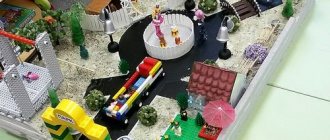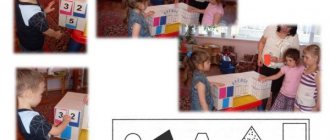The first kindergartens in Russia - presentation
State budgetary educational institution of higher professional education of the city of Moscow "Moscow City Pedagogical University" Presentation topic: The first kindergartens in Russia Performer: Mikhailova Victoria 1st year students Faculty: Preschool Education Moscow, year
The beautiful, albeit strange, name - “kindergarten” - was invented in 1837 by the German teacher Friedrich Froebel. He also created the world's first “institution for games and activities for young children” in Blakenburg. True, it did not last long, about two years, and for some reason it was closed. But as the teacher later explained, he chose this name due to the fact that since children are considered the flowers of life, then gardeners should raise them, hence the kindergarten
“Children are like flowers. You have to lean towards them to recognize them.” Friedrich Froebel, German educator.
On September 27, 1863, together with her husband, pediatrician Yakov Mironovich Simonovich, she opened the first kindergarten in the history of Russia in St. Petersburg and began publishing the “Kindergarten” magazine. Wealthy parents paid for the maintenance and upbringing of children 3-8 years old. Simonovich herself came up with outdoor games, the children were engaged in construction, and even a course in homeland studies was mandatory here. And in addition, Adelaida Semyonovna began publishing a special magazine “Kindergarten”. But two years later the establishment was closed.
A.S. Simonovich with his daughter Mr. Valentin Serov. Portrait of Adelaide Yakovlevna Simonovich
And in 1878, the enlightened female population of Russia finally waited in the wings: the Bestuzhev Higher Women's Courses opened in St. Petersburg. Organizing a nursery is also Simonovic’s undertaking. In 1886, she founded the first nursery at the Kalachaevsk rural school in the Tver province. In Simonovichi, for family reasons, they moved to Tiflis and there they also opened a kindergarten, this time an “international” one. It was visited by Russian, Armenian and Georgian children. So the domestic kindergarten faced the problems of multinationality and bilingualism at the dawn of its development. True, the word “tolerance” was not used then. Children were seen by sixties teachers as “one people.”
In the period from 1866 to 1870, several paid kindergartens were opened by private individuals in Irkutsk, Voronezh, Moscow, Smolensk, Tbilisi, and St. Petersburg. Over the years, four paid kindergartens were opened in Moscow, owned by Mamontova, Levenshtern, Solovyova and Rimskaya-Korsakova. In 1893 in Moscow there were 7 paid private kindergartens for children of both sexes (35 girls and 21 boys). All of them were located at educational institutions and were preparatory schools for very young children.
A charitable institution under the “Society of Cheap Apartments for the Children of Working Women of St. Petersburg” also opened a free kindergarten in 1866. There was a sewing workshop for sewing children's underwear, a kitchen, a laundry, and a school for children. Older children were taught the sacred scriptures, prayers, and various handicrafts were carried out, such as weaving, drawing, carving and much more. But due to lack of livelihood, the free kindergarten was soon closed.
In the Urals, the first nurseries were opened in 1892 in the village of Kosa, Komi, Permyak Territory. They were created by the national teacher Olympiada Maksimovna Varfolomeeva for peasant children. The nursery was designed for 25 children and was located in a spacious peasant hut. In 1912, in Perm, thanks to the enthusiasm of the same Varfolomeeva, a public organization arose, which was called “Bright Youth”. Her activities marked the beginning of the development of preschool education in the Perm province.
Conclusion Of course, a modern kindergarten can bring many benefits to a child. Professional teachers work with him and teach him a lot there. But still, we should not forget that the kindergarten was originally created to look after the children of a working mother. Most children of the 19th century, and all children before that, were raised in the family. And nothing, somehow they grew and grew. And among them were scientists, poets, writers, statesmen, artists, and even Friedrich Froebel himself...
Thank you for your attention!







